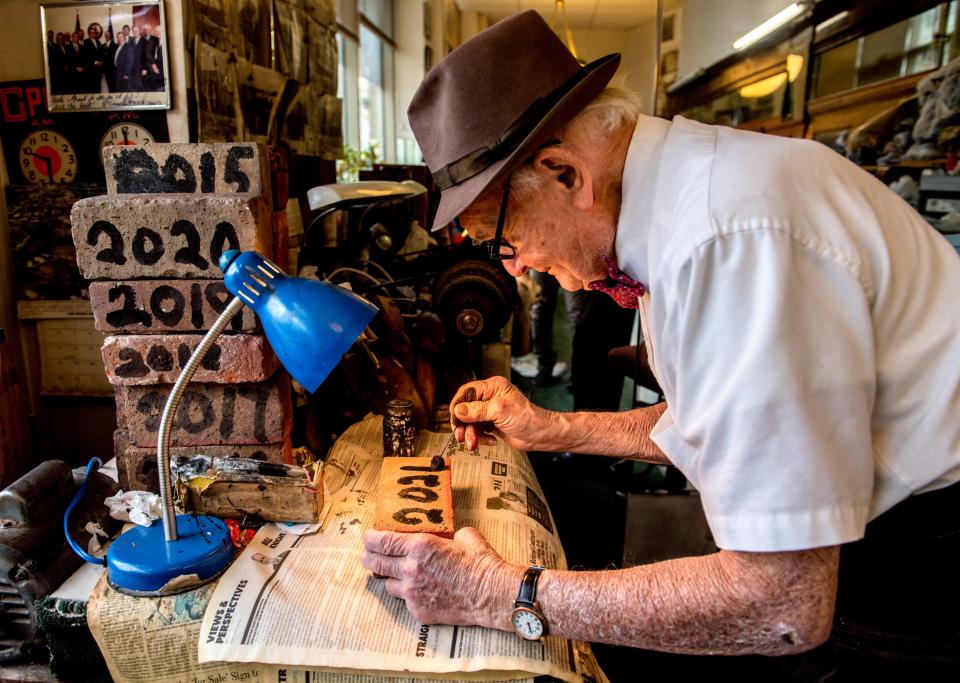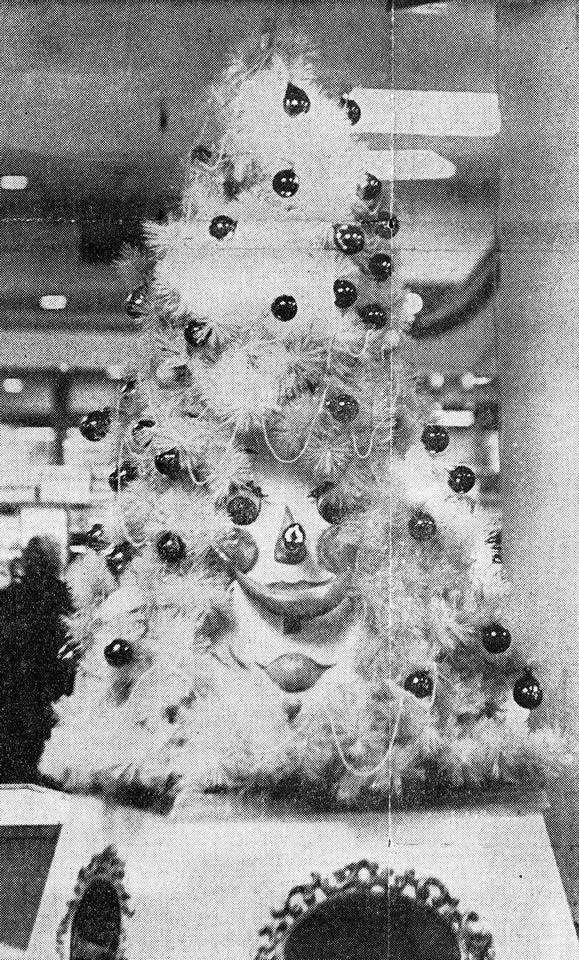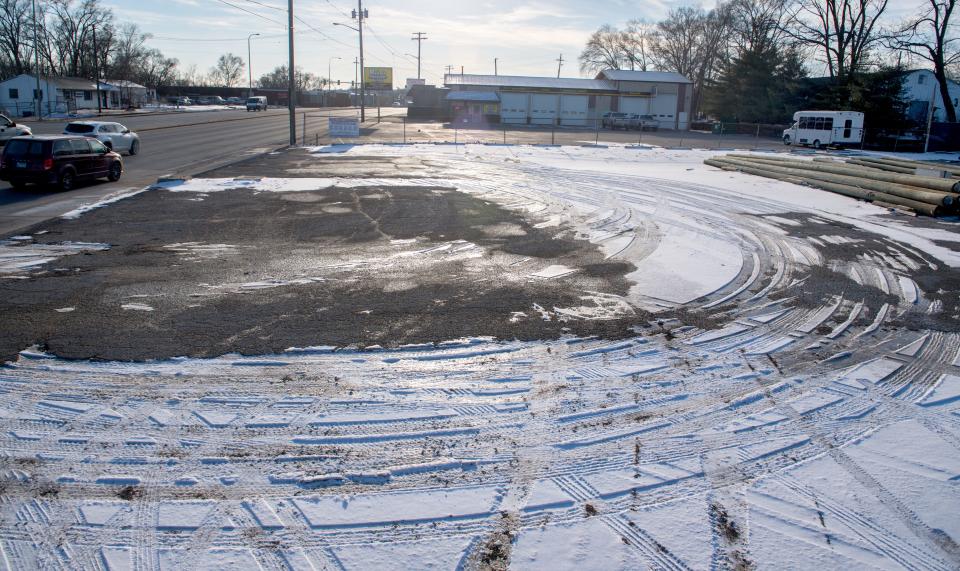33 years, 33 columns: A look back at Phil Luciano's top picks from his career

Over parts of five different decades, this column has had the good fortune to share thousands of stories — glad, sad, mad and otherwise. Here are some selections, one from each of the past 33 years.
Ernie, Frances and The Pig Hip (1989)
South of Lincoln sits the burg of Broadwell, whose claim to fame among Route 66 enthusiasts was The Pig Hip, a combination cafe, knickknack shop, motel and gas station run by Ernie and Frances Edwards. The place burned down in 2007. Still, whenever I pass through Broadwell, I recall how Ernie (who died in 2012) would gesture at the remains of Route 66 and say, almost reverently, "This is the Main Street of the world here."
Farewell from Phil: After thousands of columns over 33 years, columnist says farewell to the Journal Star
The Monical Miracle (1990)
I went to visit the soft-spoken Mary Monical in Pontiac for a Mother's Day story regarding her 17 kids. She mentioned her husband, George, was in cancer treatment at a Veterans Administration clinic in California. He'd attended the University of Illinois but quit just three credit hours short of his diploma. He wanted his degree but needed to support his family. So, he left school to open a CPA firm. When Mary mentioned that George's prognosis was terminal, I promised to get him that diploma at that spring's commencement, just a few weeks away. Somehow, with help from multiple quarters, it happened.
Kahla Lansing (1991)
In 1991, it seemed unfathomable that children could disappear from their small-town neighborhoods. That has changed, as central Illinois learned in September 1991, when 6-year-old Kahla vanished while roller-skating outside her home in Spring Valley.
Wade Meloan and Norma Jean the elephant (1992)
A freak accident in 1972 killed the star of a visiting circus, an elephant named Norma Jean. After they buried her in a park in tiny Oquawka, local druggist Wade Meloan spearheaded an effort to put up a marker for the big ol' gal. Tourism signs in town still point to the elephant graveyard. I asked Meloan why people cared so much about Norma Jean, and he replied with one of my favorite all-time quotes: "If you can't go through life helping people, even if it's only a dead elephant, then there's no use in you being here."
Nolan Ryan and Dale Allbright (1993)
In 1985, Dale Allbright, 12, of Monmouth visited a friend who began playing with a gun. The weapon discharged, firing a bullet into Dale's brain, leaving the lad at death's door. But he recovered, a story so inspiring as to merit national attention. But Dale's biggest thrill came years later, when he met his hero: baseball Hall of Fame pitcher Nolan Ryan, who (with a little intercession from here) went out of his way to give Dale a special night.
More Luciano: You can own the world's largest collection of 8-track tapes — for about $100,000
Richard Montgomery's shack (1994)
Some people inherit money or a mansion, but Richard Montgomery of Creve Coeur got the family shack. The ramshackle dwelling was hidden in thick brush off the Illinois River. Montgomery, who subsisted via animal traps and a fishing pole, sometimes came to town to hunt for aluminum cans. When he didn't show up in town for a while, acquaintances wondered what happened to him. Authorities found his shack, where he'd passed away amid piles of hoarded junk. They couldn't find his kin, but the column did.
Don Lang and his outhouse hunts (1995)
Don Lang found the potty of gold. Lang, then 36, introduced me to his hobby of privy-hole digging, which involves excavating old outhouse sites for discarded bottles worth hundreds of dollars each. Lang lived in Forrest, about 60 miles east of Peoria. Appropriately enough, his house was at the end of John Street.
Reece Parks' dinosaur doo-doo (1996)
In Utah, Reece Parks hunted fossilized dinosaur dung, known as coprolites. The Knox County man would cut the marble-like objects to make bookends and other handicrafts. He even wrote poems about the fecal fossils.
Failed fugitive (1997)
Though dumb crimes were a staple of this column, the worst might've happened in Galesburg in 1997. A 26-year-old Knox County man, wanted on a burglary warrant, led police on a bizarre foot chase. His clueless flight from capture ended when he hid in one of the worst spots imaginable: the home of a Galesburg cop.
The Pekin nudist (1998)
The Journal Star long had chronicled Robert Norton's peculiarity of wandering around his Pekin backyard in the buff. But no reporter had ever asked the key question of how he planned to spend eternity. In one of the most unusual interviews in the history of journalism, Norton explained he planned on being buried naked — an arrangement apparently unique nationally. But when he died in 2005, his family had him laid to rest in a shirt and trousers. Sigh.
Luciano on Illinois history: Peoria as Illinois' biggest city? And Chicago in Wisconsin? Here's how it almost happened
The evil Christmas tree (1999)
Though obviously not human, my front-yard evergreen took on a life of its own. The nasty tree always attempted to kill me whenever I tried to string it with Christmas lights.
Losing a life, and a friend (2000)
Jeff Lawless, whom I knew as a high-spirited bachelor, calmed down in a flash when he met the woman of his dreams. But just before they were to begin a new life together, a freak accident shattered their plans and cost me a remarkable pal. Still, in a way he lives on — through his gift of life.
Tom's D-Day (2001)
June 6 featured a touching military tale about a friendship forged by three soldiers during World War II and their efforts to get together every D-Day thereafter. Eventually, only one of the three survived, a gent from West Peoria who out of humbleness insisted that I not use his full name. When he died in 2008, I retold the story, revealing his identity; after all, a hero should be properly recognized.
Date with Elvis (2002)
In this column, nearing the 25th anniversary of the death of Elvis Presley, a Peoria woman recalled how he once asked her out during high school in Memphis — and why she turned him down.
Asian carp (2003)

Just when Asian carp were becoming infamous in Peoria, the summer of 2003 saw Peoria's first casualty. A local mom on a personal watercraft was struck in the face by fat flying fish. This story eventually got picked up by CNN and played worldwide, positioning Peoria as a haven for the hated, disgusting river critters.
Innocence lost (2004)
While walking to the bus stop to get to school, an 11-year-old girl from Creve Coeur was abducted by two men in a van. An ensuing, daylong assault included suggestions of murder, but she managed to escape. The column detailed her family's struggle to recover.
Larry Bright (2005)
The arrest of Larry Bright in 2005 gave Peoria the horribly odd happenstance of having hosted three serial killers in the past decade. Somehow, for 15 months, Bright went undetected as he killed, burned and buried eight women at the home he shared with his mother in a neighborhood just outside Peoria. Peoria wondered what prompted his carnage. In this column, he offered to share his motives, but at the price of $200.
Daniel James Sobota and "The 8th of November" (2006)
On Nov. 8, 1965, the family of Daniel James Sobota was notified that the Peoria teen had been killed in action in the Vietnam War. Forty-one years later, a popular country-music video pushed Sobota and dozens of his comrades into the national spotlight.
Dan Fogelberg's mystery gal (2007)

When the Peoria troubadour died in late 2007, he left behind a mystery: Who was the girl with whom he'd shared a star-crossed love affair in "Same Old Lang Syne"? Days after his death, this column supplied the answer. It's by far the most read and most popular column to ever appear here.
Bernie Shelton (2008)
The legacy of Bernie Shelton harbored a head-scratcher: Who murdered the Peoria gangster six decades earlier? A pair of columns gave a solid possibility, thanks to the insight of an old local safecracker finally willing to spill his guts about what he knew.
Dax Locke's early Christmas (2009)
Little Dax Locke's leukemia fight and the ensuing fundraising in his name would command global attention and a feature movie. Before all that, when this column ran in November 2009, his parents didn't think the 28-month-old would live to see Christmas. So their Washington neighbors — and eventually the entire city, then people around the world — festooned homes with early yuletide decor, which the dying boy could view during car rides and via computer.
The Manzella family's cancer battles (2010)
Rich and Veronica Manzella were living the American dream in Normal: nice home, solid jobs, two great kids. Then cancer struck: first Rich, then Veronica. The couple discussed their challenges, including the possibility of the children losing both parents.
Ask Phil: Harman Highway? Harmon Highway? It depends on how you look at this Peoria County road
The wizard of the blizzard (2011)
When Snowmageddon hit, Peoria came to a standstill overnight. Not me: I took a 2.5-mile stroll through the worst snowstorm in modern Peoria history, and chronicled the slippery (and perhaps senseless) sojourn.
Kevin Harmon and friends (2012)
As Kevin Harmon of Peoria explained, "I went from 18 to 80 in seconds" — because of a 1986 accident that left him quadriplegic. But new technology allowed him to write his first novel, published in 2012. The next year, we revisited Harmon after a group of old friends secretly rehabbed his aging home.
Whatever happened to Fay Rawley? (2013)
The Fulton County man's disappearance in 1953 triggered national headlines and speculation. Sixty years later, his fate remained (and still remains) as mysterious as ever.
Jimmy Binkley’s finale (2014)

A one-of-a-kind treasure, the jazzman played at nursing homes three times a week, plus hosted spring and Christmas parties for hundreds of — as he called them — “my babies.” He appeared in this column repeatedly, to appeal to readers, who helped especially with Christmas gifts. In 2014, Jimmy — by then frail with ailments — served as grand marshal for the Santa Claus Parade. At the broadcast stand, the parade stopped so attendees could serenade him with his signature tune, “Let Me Call You Sweetheart.” Though he died the next month, volunteers not only have kept the Christmas parties going, but also expanded the shindigs into nursing homes in five counties. The pandemic has put a pause on those parties, but Jimmy’s eternal spirit will put them back on the calendar, maybe this year. After all, as Jimmy liked to say, “The main thing is, make the people happy.”
Willie York returns home (2015)

Though Willie would occasionally pop up in this column, my favorite involved the voluble vagabond's return to Peoria after an absence of three years. Willie, then 70, was at his shirtless and squawking finest, waxing on subjects as wide-ranging as Peoria economics to national immigration policy. He also explained his less-is-more philosophy of living on the streets: “I’d rather be broke. It’s easier that way. If I look like Queen Elizabeth’s son, there’d be a lot of people hanging around me, maybe even the mayor.”
The fight over Fulton Sheen (2016)

Somehow, I became the local correspondent over the yearslong tug-of-war over the remains of Archbishop Fulton Sheen, with the Peoria Diocese fighting a David-vs. Goliath battle with the Archdiocese of New York. I had no skin in the game, as I’m not Catholic. But I supported the local effort on two grounds: 1) It made sense, and 2) I’ll forever take the anti-N.Y. side on any issue. The Peoria Diocese won the battle, as Sheen’s remains are now at St. Mary’s Cathedral. But so far the push for sainthood for Sheen — which not only would be a boon for worldwide Catholics but also for local tourism — has stalled for inexplicable (and possibly political) reasons.
Monsters in central Illinois (2017)
This column wondered about the possible return of the purported Perdelwitz Monster, which near Princeville in 1950 was blamed for the snatching and gobbling of 40 pigs, four cows, 26 sheep and countless chickens. It was one of many instances over the years when we mulled many unexplained sightings of various beasties, from cougars to cryptids. My favorite remains The Springdale Pterodactyl, which to this day seems to avoid me every time I look for him.
George Manias and his brick (2018)

This column long has enjoyed visits with the proprietor of George’s Shoeshine & Hatters, without a doubt the hardest working man in Peoria. George — everyone calls him George — recently celebrated his 75th year in business. And each Dec. 31, per a Greek good-luck custom, he paints the numerals of the new year on a brick. Here’s to many more bricks (and good luck) to come.
75 years and counting: George Manias celebrated his 75th anniversary of shoeshines. Why it might've been his last
Peoria’s state microbe (2019)

Neil Price and Gary Kuzniar had a dream. The scientists at the National Center for Agricultural Utilization Research (otherwise known as the ag lab) thought Illinois should follow some other states and adopt a state microbe. They specifically eyed penicillin, the mass production of which was pioneered at the ag lab, a development that helped win World War II and save countless lives globally since. This column shared that dream with state Sen. Dave Koehler, who pushed legislation that slowly wended its way through the General Assembly. Last year, penicillin — specifically, the strain called Penicillium rubens NRRL 1951 — became the Official State Microbe of Illinois.
Bergner’s souvenir (2020)

During mid-demolition of Bergner’s, I went to Sheridan Village to snag a few bricks. One now sits amid my garage display dedicated to Peoria, a hodgepodge that includes tributes to city icons like Pete Vonachen and the Hubcap House, plus souvenirs like a meat hook from the Peoria Stockyards and a floor chunk from Robertson Memorial Field House. To me, though, the brick means more than Bergner’s and symbolizes vestiges of Peoria — Hunt’s Drive-In, Jumer’s Castle Lodge, numerous movie theaters — that exist only in our collective memories.
Nance Legins-Costley’s fight and freedom (2021)

If the world were just, the name of Nance Legins-Costley would resonate amid the likes of Harriet Tubman, Frederick Douglass and other abolitionist rebels. But her story is hardly known. She became the first Black person freed from bondage by Abraham Lincoln — in Pekin, in 1841, long before the attorney became the nation’s president and more than 20 years before the Emancipation Proclamation. Despite that legacy, she is buried in an abandoned cemetery now under a parking lot in South Peoria.
This article originally appeared on Journal Star: Phil Luciano selects 33 columns for 33 years with the Journal Star

